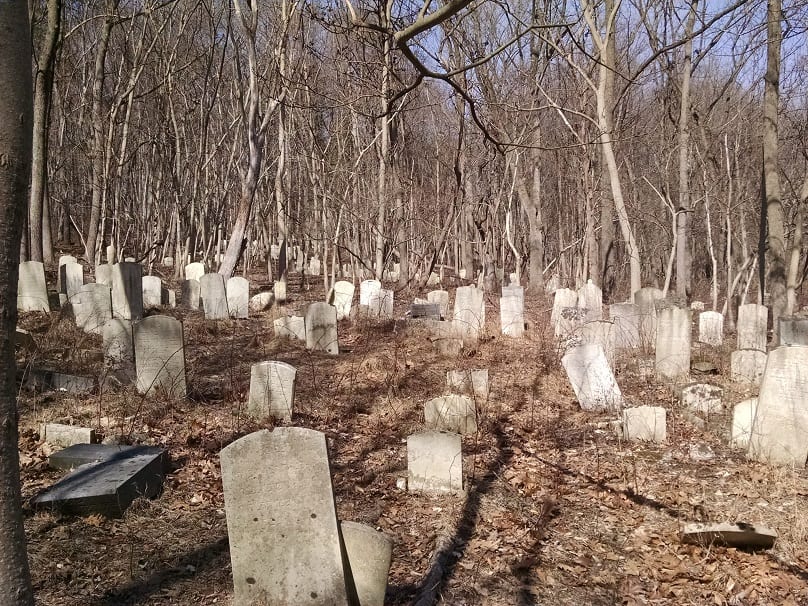Contributors
Julie Snell, Founder and Principal, TEND landscape inc., Philadelphia, PA
Ellen Snyder, Owner, Ibis Wildlife Consulting and Durham Land Stewardship Coordinator, Newmarket, NH
Invasive plants can cause significant challenges at restoration sites. ELA asked a couple of members to share their experiences managing invasive plants and offer tips for success.
Have you had a significant problem with invasive plants at a property that you are responsible for? If so, what plants posed or still pose the greatest threats?
Julie: We developed a master plan for a historic cemetery which had been abandoned and become very overgrown with many invasive plants. One of the most significant challenges on that site was the abundance of corktree (Phellodendron sp.) throughout the site, many growing close to the headstones. Corktree thrive in sun or shade and once established they create a dense canopy, which shades out seedlings of other plants not adapted to such dark conditions. The female trees produce numerous clusters of berries that remain on the tree into winter. Seeds are spread by birds and also moved over the ground by stormwater.
Japanese stiltgrass (Microstegium vimineum) was the prevalent herbaceous groundcover that had established large stands throughout the site. Stiltgrass is adaptable to a wide range of light and soil conditions and produces copious amounts of seed, allowing it to outcompete other plants in the ground layer.
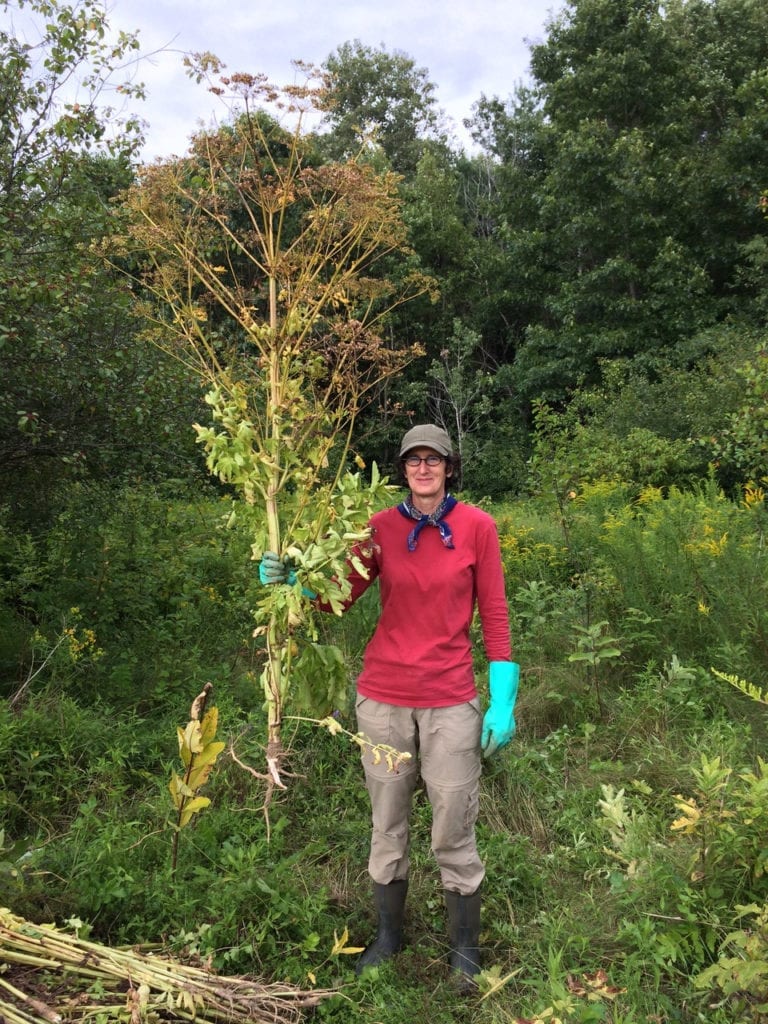
Ellen Snyder, Durham Land Stewardship Coordinator, pulls invasive wild parsnip on Durham’s Oyster River Forest. Photo: Mike Bald
Ellen: As the Land Stewardship Coordinator for the Town of Durham, New Hampshire, I manage ten properties ranging in size from one acre to 172 acres. Situated in southeastern NH, all the properties have invasive plants, some more extensive than others. The dominant invasive plants include glossy buckthorn, autumn olive, Asiatic bittersweet, honeysuckles, Japanese barberry, winged euonymus, and multifora rose. We are just starting to map stands of Japanese knotweed along the roadsides in the Town. In partnership with Nature Groupie, UNH, and The Nature Conservancy, we are tackling garlic mustard in several discreet locations. One town property has a large stand of wild parsnip.
Describe your invasive management strategies, including whether you manage invasives manually/mechanically or with chemicals.
Julie: At the historic cemetery, the methods for control were dependent on landscape type, plant species, management goals, and who would be doing the work (volunteers, landscape contractor or arborist); methods included a combination of mechanical and chemical techniques.
For the corktree, the management approach was first to decrease the seed source by identifying the female trees, cutting them down, and treating the stump with an herbicide. While the smaller trees could be cut down by volunteers, the larger, mature trees were tagged for removal by an arborist. In this case, targeted chemical application was the most strategic and economical choice.
Recognizing it would be very difficult to eliminate the stiltgrass completely, instead the management goal would be to use resources (both funding and volunteer hours) in the best way to decrease abundance. To manage the stiltgrass, volunteers would rely on monitoring and mechanical removal, which consisted of repeated cutting, especially in the spring and early summer either by hand or with a string trimmer to cut down growth before seed heads form.
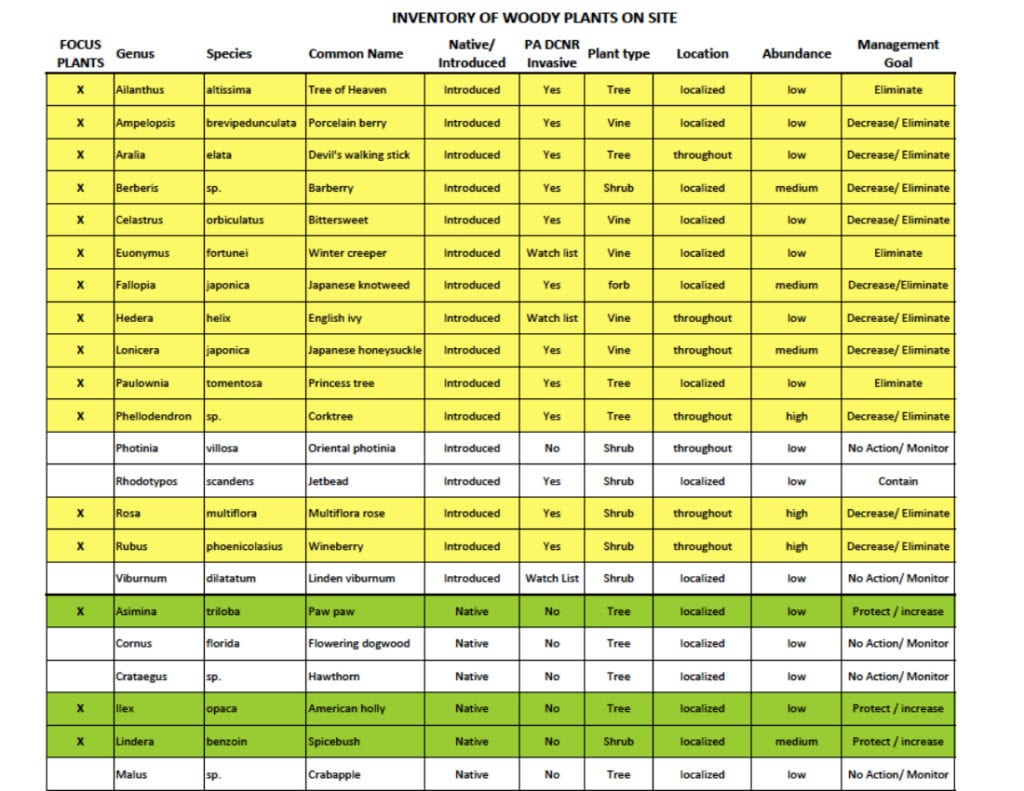
The table is an inventory of the herbaceous and woody plants on site. The yellow and green highlighted plants represent priorities for control, either removal or preservation based on abundance or invasive or native plant status. The category FOCUS PLANTS serves as the shortlist of plants that represent the most pressing management needs on this site.
Ellen: We use a range of strategies to control invasive plants in Durham. Information about invasive plants is shared broadly with the community through the Town website, volunteer work days, property kiosks, and a weekly email newsletter distributed by the Town Administrator. For the properties where we are actively controlling invasive plants, we have a management or stewardship plan that includes the overarching goal or outcome for the invasive control effort, such as: a healthy forest; meadows to benefit songbirds, pollinators, and other wildlife; improved pedestrian trails; or restoration of native plant communities.
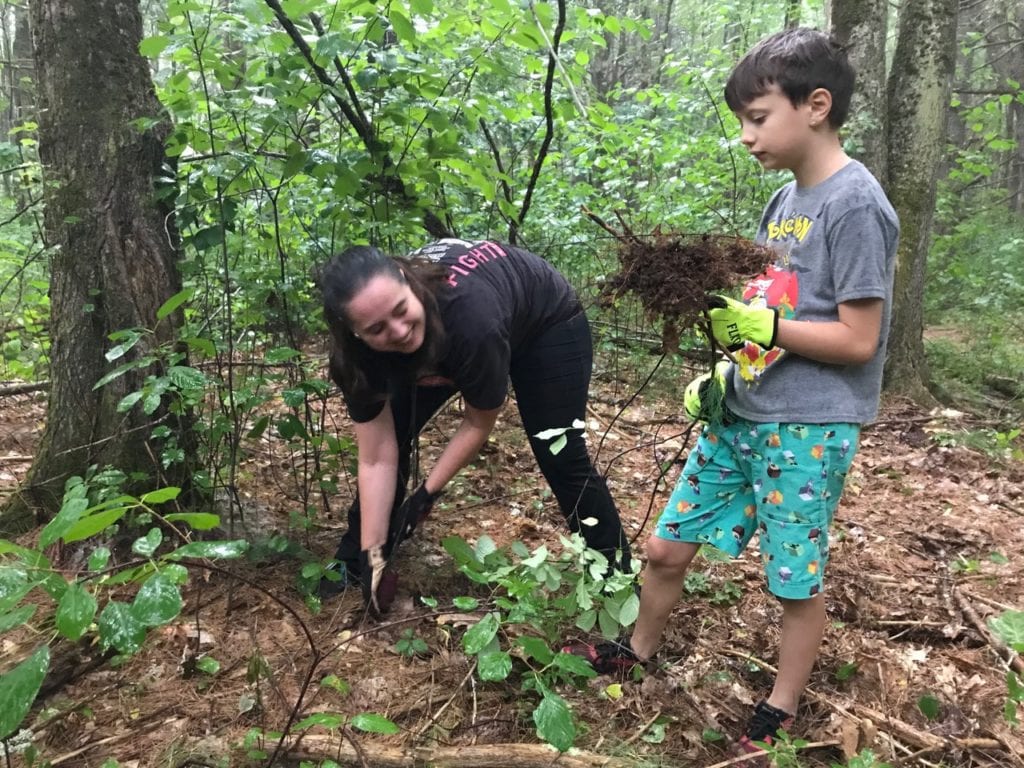
A community volunteer and son hand pull glossy buckthorn seedlings and saplings under a pine stand in Durham’s Thompson Forest. Photo: Ellen Snyder
Invasive plant populations are mapped or otherwise identified and then we identify strategies and funding to implement the relevant control methods. Some plants, such as garlic mustard and small buckthorn seedlings lend themselves to engaging volunteers in pulling the plants. On other sites we’ve engaged contractors to physically remove plants by hand pulling, digging or cutting with various hand tools, or uprooting and shredding by tractor. On some properties we’ve engaged local licensed pesticide applicators for herbicide control of invasive plants in places where physical removal is not feasible, to avoid soil disturbance such as around historic cellar holes or along riparian areas, or as a follow-up to mechanical control to minimize re-growth of invasive plants. Often, we are using two or more of these techniques on the same site.
What tips can you share for successful restoration of sites after invasive plants have been removed? Please provide specific timing, plant selections, oversight process, and any other pertinent details.
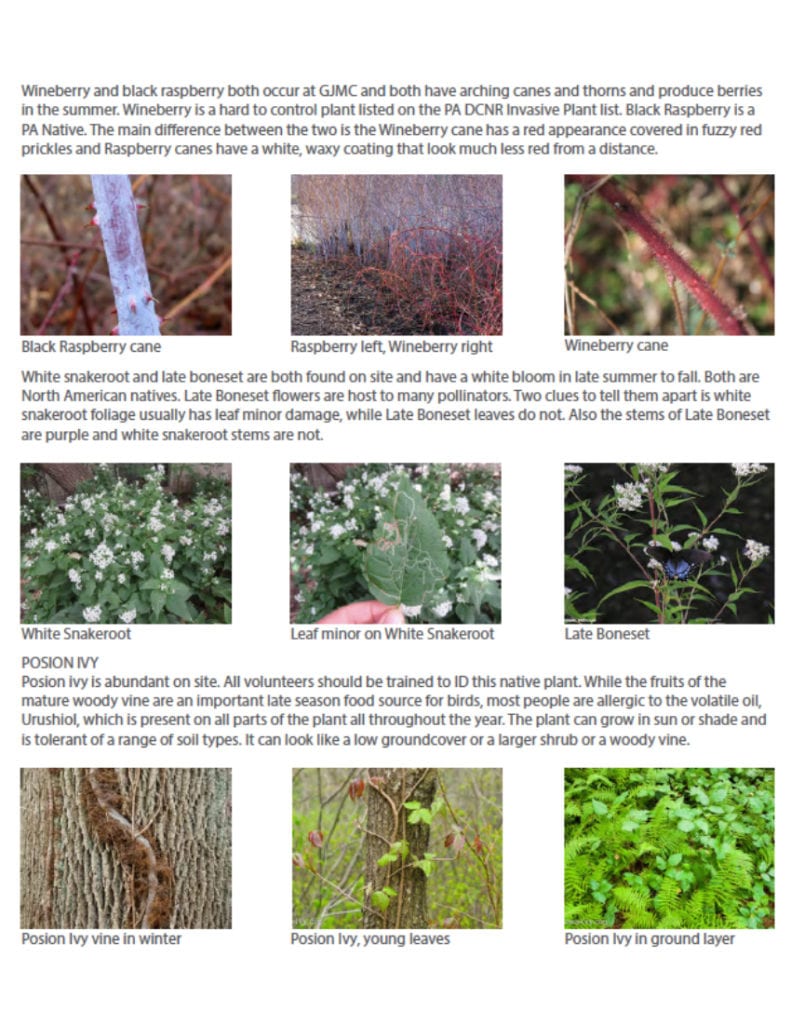
A few pairs of plants on site looked very similar. This cheat sheet was developed to assist in sorting out the look-alikes.
Julie: The restoration strategy at the historic cemetery was always to pair any removal action with a replanting/restoration action. Removal of the corktree, for example, was strategically planned. Since the removal of only a few trees could create an opening in the canopy, which would allow the seed bank to germinate, the replanting of that area would need to immediately follow removal operations. Several no-mow grass mixes were tested at the cemetery as possible low-cost replanting options for these open spaces. The grasses would serve as a cover crop, holding the ground until longer-term planting solutions could be accomplished. If the labor and resources for replanting were not available, the practice would be to remove only the flower or berries of the female corktrees, thus decreasing the reproductive capacity without disturbing the ground layer.
It would be impossible to remove all invasive plants from this site. Monitoring and regular maintenance will be ongoing aspects of successful management at this site.

Where corktrees were removed, creating a sunny spot, a low-mow grass mix was tested for durability in flat and sloped areas. In some places, such as around the grave markers, the seed mix was intended as a long-range solution. In other areas, the low-mow mix was used as a temporary cover crop until later phases of the master plan could be implemented.
Ellen: I recommend the following:
- Identify goals before embarking on invasive plant control. Typically, it is not about full eradication unless you have small populations.
- Invasive plant removal requires persistence, patience, and vigilance. You need to have a 5-10 year plan to ensure success.
- In forest situations, control understory invasive plants as much as possible before any timber harvests.
- Avoid clearing land when invasive plants are in fruit; otherwise, removal allows seed drop into newly disturbed soil
- Controlling plants when they are small is MUCH easier than tackling big plants, but you also need to halt fruit/seed production of mature plants
- Planting native shrubs and trees after invasive removal is time consuming, and success depends on rainfall. Often native seed bed is present and will respond well to release, so planting is not necessary. However, if small-scale planting is feasible that will help crowd out invasive seedlings.
- Stay vigilant about new infestations.
- If engaging volunteers, interns, contractors, pesticide applicators – all require some level of education and oversight. It’s best if that oversight is sustained over many years, otherwise invasives will return.
- Engage the entire community, including Public Works Department, to avoid continued spread of invasive plants through roadside mowing, moving construction material, and sale of invasive plant material.
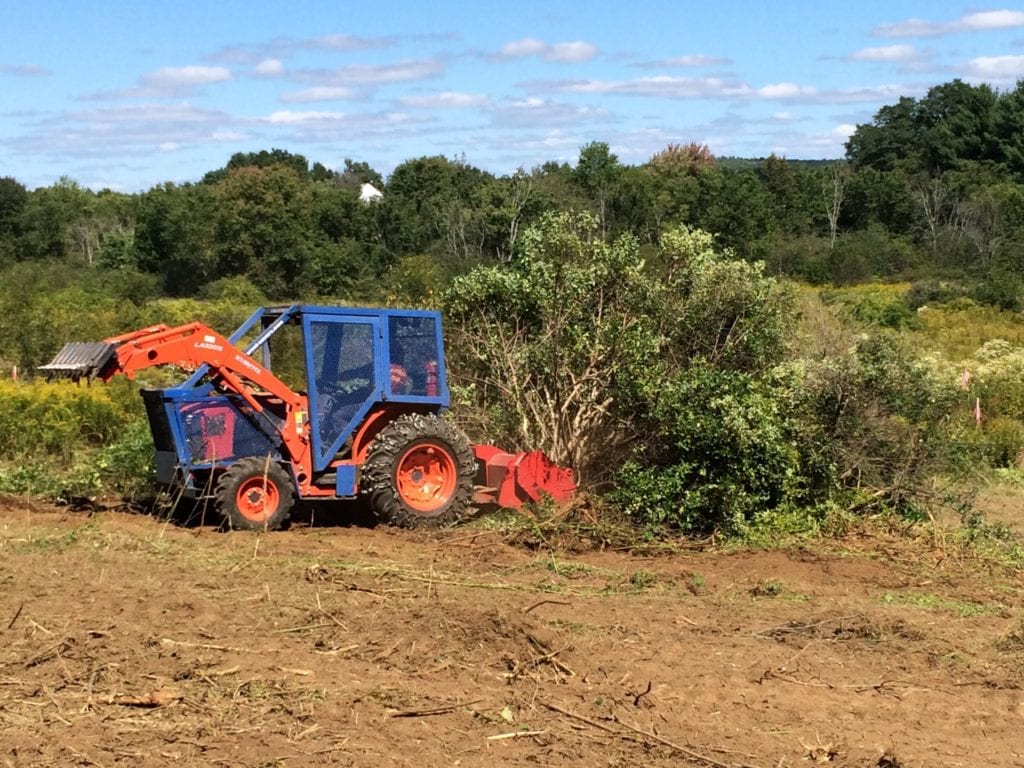
Forest Savers LLC of Vermont uproots and shreds invasive shrubs at Durham’s Oyster River Forest. Photo: Ellen Snyder
***
Each author appearing herein retains original copyright. Right to reproduce or disseminate all material herein, including to Columbia University Library’s CAUSEWAY Project, is otherwise reserved by ELA. Please contact ELA for permission to reprint.
Mention of products is not intended to constitute endorsement. Opinions expressed in this newsletter article do not necessarily represent those of ELA’s directors, staff, or members.

